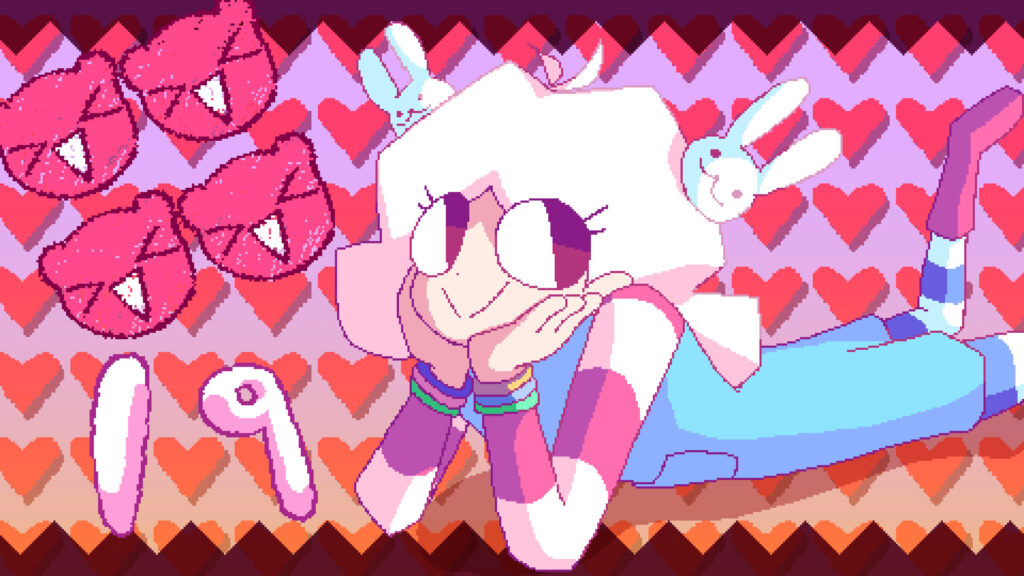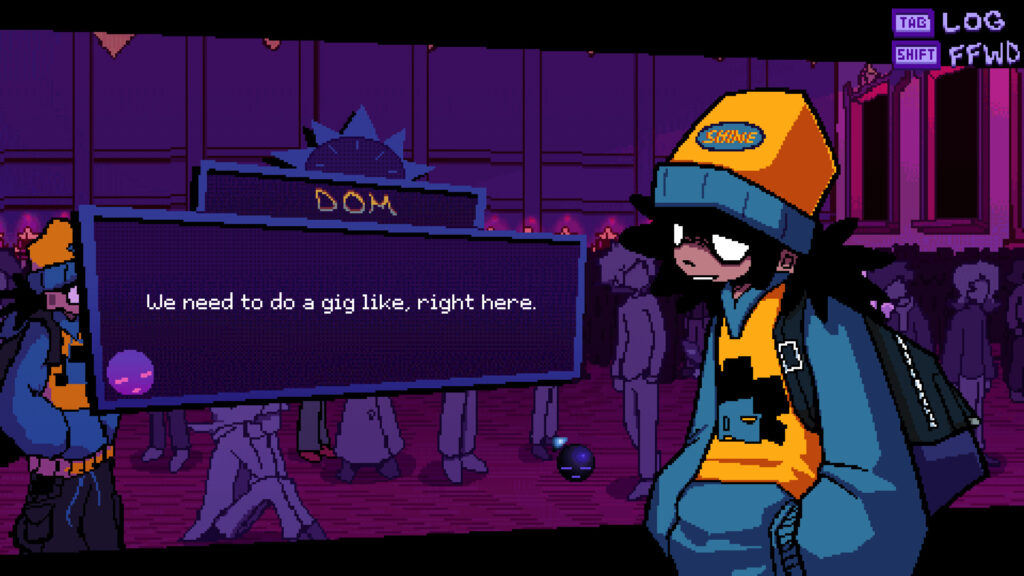Of all the places to find a new game, Kickstarter has to be one of the most interesting. So many ideas go through the space, often more wild and experimental than what you’ll find in the mainstream, and there’s not a single filter or creative barrier anywhere. It’s one of the few places that can easily define what works and what doesn’t; after all, the people that vote on it do so with their wallets.
Sadly, this doesn’t always turn out a great end-product. Sometimes you’ll put down twenty or forty dollars on a cool idea and be met with a flop a few years later. It’s a sting that only comes when you bet on the industry’s wild cards, but at the same time, there are few feelings better than discovering a project you know will top the charts. For me, that’s exactly what happened when I stumbled upon MINDWAVE.
Spinning off from the “microgame” genre pioneered by the WarioWare series, MINDWAVE is an example of innovation done right. It takes the basic structure of its parent series and goes in a completely new direction, adding in elements that Nintendo would never even consider. I’ll go into more detail below, but the point is this: I haven’t been this passionate about an indie game, let alone a Kickstarter game, in quite a while.

MINDWAVE sets its tone right off the bat: You play as the aptly named “Pandora,” a teenage girl looking to strike it rich entering an annual tournament for the in-universe game Mindwave. Developed by the morally grey Mindscape Corporation, players use neural implants to link to each other’s minds and experience their memories in the form of lightning-fast microgames. Whoever can survive the other’s brain the longest wins and moves up the bracket, while their opponent… doesn’t.
Only the first round is available in the demo, but even just from that, it’s clear that this is a premise that works on a lot of different levels. The characters are distinctly written and easily likable, even with only a few short chats to go off, and the melding of the character’s mental states with the fast-paced gameplay adds a ton of cool story opportunities. Seeing the inner workings of the bright and bubbly Abbie lets you understand her on a surprisingly deep level, even after only a few minutes of play. With the darker undertones that the game presents, this will undoubtedly lead to even wilder ideas later on.
Aiding in that is a top-notch art style, faithful to the oddball aesthetic of WarioWare while injecting even more of its own chaotic flair. Character designs are bold and colorful to show off their personalities, and entering the mindscape switches the gameplay to match each one. With so many microgames to illustrate, the variety in art and the quality of each style is impressive.
While only a few music tracks are currently available, what’s there is also very solid. In particular, the midi-pop anthem used for the first stage is catchy and cheerful, matching its associated character in both the genre and the lyrics. If the following stages can keep up with what’s presented here, it’ll be a definite highlight of the experience.

Gameplay is split between sections of choice-based dialog and microgame challenges, both of which are great in their own right. As mentioned, the characters you’ll find here are all fun and engaging, with plenty of room for building relationships as the game continues. Pandora and her friend Smalls have a sly, sarcastic banter that underscores most conversations, and the quirky participants of the tournament mesh well with it. This is especially true given that anyone you talk to might soon be your next opponent, who’s mind will be yours to play in.
Aiding the story further is a simple, but effective system of conversation in which you gain more options depending on your choices. You could learn more about each person and their plight, but there’s an invisible time limit during these sections, so you’ll never be able to reach everyone in a single run. This adds a nice sense of replayability while giving your choices a bit more weight and realism.
Microgame sections function much like they do in WarioWare: Every ten seconds or so, a short challenge will appear on-screen, and it’s your job to figure out what you’re supposed to do and complete it. Each stage contains its own selection of games centered around a theme, in this case the mind and memories of whoever you’re up against. The longer you last, the faster and more challenging the games get.
Different control schemes are also included to add variety. Sometimes you’ll need the mouse, sometimes the spacebar or keys, and sometimes a combination of two. Because the microgames are constantly changing and the controls with it, the feeling of thinking on your feet is very satisfying once you get the hang of it. Add in gimmicks like mid-match pop-up ads or games that play upside down, and you’ve got a recipe for messy, spontaneous fun.

When you put it all together, MINDWAVE is simply awesome. The premise is solid with an interesting story to match, the art style is wild and full of personality, and the gameplay furthers the ambitions of the games that came before it. For everything that WarioWare does, MINDWAVE takes it one step further: the story is more involved and pairs better with the gameplay, the art is even more varied and stylish, and the punk-inspired atmosphere is something only an indie game can really pull off.
I hesitate to recommend a game based only on the demo, but this makes a strong enough case that I just can’t help myself. I’ve long dismissed the microgame genre as enjoyable experiences that lack depth or complexity, but MINDWAVE proves that it can have it both ways. If the team at HoloHammer can turn this into a full game of equal quality, we might just have something very special on our hands.
If anything I’ve shown here has piqued your interest, I encourage you to check out the Kickstarter page and give it a try yourself. The demo is free and surprisingly polished, so you have nothing to lose from giving it a shot. At the time of writing, there is roughly three weeks to go in the campaign. The game has already reached its goal and several stretch goals beyond that, but the more funding they have, the better the end product they’re likely to produce. UPDATE: The campaign is now finished, and has generated more than 11x the amount of its initial funding goal (roughly $440,000)! This is extremely impressive for the development team, and further demonstrates the quality inherent to the game. With so much support, we’re likely to see a completely uncompromised end product, which is exciting to say the least.
It may be three agonizingly long years until we see this finished, but if all the stars align, MINDWAVE will be more than worth the wait.

